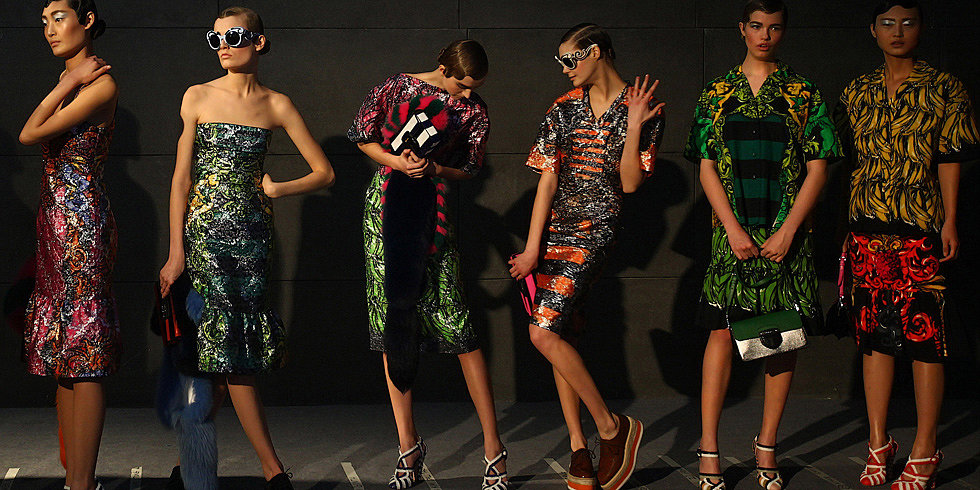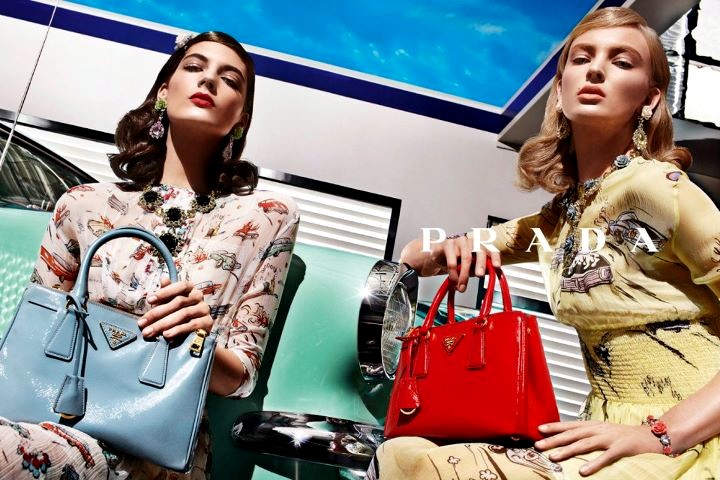Mario Prada founded Italian fashion label, Prada S.p.A. in 1913, which initially began as a leather goods shop, ‘Fratelli Prada’, that he and his brother ran in Milan. Fratelli Prada, signifying Prada brothers in English, primarily sold leather bags, trunks, beauty cases and luxury accessories. Female family members were deprived of joining into the company, as Mario held the tenacious view that business was not a woman’s role, but ironically, it was Mario’s daughter Luisa Prada who took on Prada as his beneficiary eventually, running the company for almost 20 years. Continuing the female streak, Luisa’s daughter Miuccia Prada joined the family business in 1970 and eventually inherited the company in 1978. For your fashion minds, here is their story…

Miuccia got straight down to business and began making waterproof backpacks out of Pocone, a special type of nylon with a fine twisted weave. She also hired Patrizio Bertelli who convinced her to discontinue the importation of English goods and change the design style of luggage. With Bertelli by her side, Miuccia was able to find time to incorporate her own designs and creative ability into the House of Prada, releasing her first set of backpacks and totes in 1979. The materials used included a tough military spec black nylon that her grandfather used as coverings for steamer trunks, and the success of the bags was slow given the high price tag – but nonetheless did become her first profitable hit.
Following the release of the bags, Miuccia and Bertelli sought out wholesale accounts for the bags in upscale department stores and boutiques worldwide. In 1983, Prada opened a second boutique in the shopping district of Galleria Vittorio Emanuele II, Milan… similar to the original store but with a sleek and contemporary contrast to it.

In 1984, the classic black nylon tote was released, including a shoe line. Also that year, Prada expanded its horizons across continental Europe, opening stores in prominent shopping districts within Florence, Paris, Madrid and New York City. In 1985, the “classic Prada handbag” was released, becoming an overnight sensation. Although practical and sturdy, the handbag expressed an aura of luxury with its sleek lines and craftsmanship, becoming very much the Prada signature.
In 1989, Prada launched its women’s ready-to-wear collection, which was renowned for its dropped waistlines and narrow belts. Prada’s originality was undeniably the core influence for its premium status. The signature look was using natural hues to create sexy yet sophisticated garments in luxurious fabrics. By the early 1990s, Partrizio di Marco took on the challenge of expanding business in the United States, successfully arranging for Prada bags to be prominently displayed in department stores to catch customer’s attention: including the eyes of fashion editors.
In 1992, the sister label MiuMiu, named after Muccia’s nickname, was launched catering to a younger target market. Despite maintaining the classical appearance, the label was a more vibrant contrast with flowing silhouettes. Soon after, the Prada Sport label was created followed by a ready-to-wear menswear and lingerie collection. A year later, Prada received an award from the Council of Fashion Designers of America for its accessories.

In 1994, sales were reported at US$210 million with 20 percent of the total accounting solely to clothing sales. In 1995, Prada was awarded the CFDA Designer of the Year Award and one year later opened the largest chain boutique (at the time) in Manhattan, New York, spanning 18,000 square feet. At this stage, House of Prada was stationed in 40 locations worldwide, half of which were just in Japan.
Determined to hold a leading portfolio of luxury brands, Prada acquired fifty-one per cent of Helmut Lang’s company for US$40 million in March 1999. Months later, Prada paid US$105 million to acquire full control of Jil Sander AG which also led to a gateway into the German market.

The noughties brought about the skin care revolution for Prada, which was introduced in the United States, Japan and Europe. To help alleviate the company’s debts of over US$850 million, Prada planned on listing 30 percent of the company on the Milan stock exchange in 2001. However, subject to financial pressures, Bertelli sold Prada’s entire share in Fendi to LVMH raising only US$295 million.
In, 2004, Prada made their commercial fragrance debut offering Prada Eau de Parfum. Today, Prada markets a number of fragrance lines, including Infusion, Luna Rossa, Prada Amber, Prada Candy as well as Prada Exclusives. A year later, the short film Thunder Perfect Mind was presented at the Berlin Film Festival to launch Prada’s new fragrance. Miuccia collaborated with film director Ridley Scott and his daughter Jordan Scott to effortlessly portray the convolutions of being a woman.
For further information on how Prada exploded into a globalised corporate powerhouse check out FIB’s Masters of Fashion Vol 33, available now from Amazon and all good book stores: http://bit.ly/MastersofFashionVol33Italians







